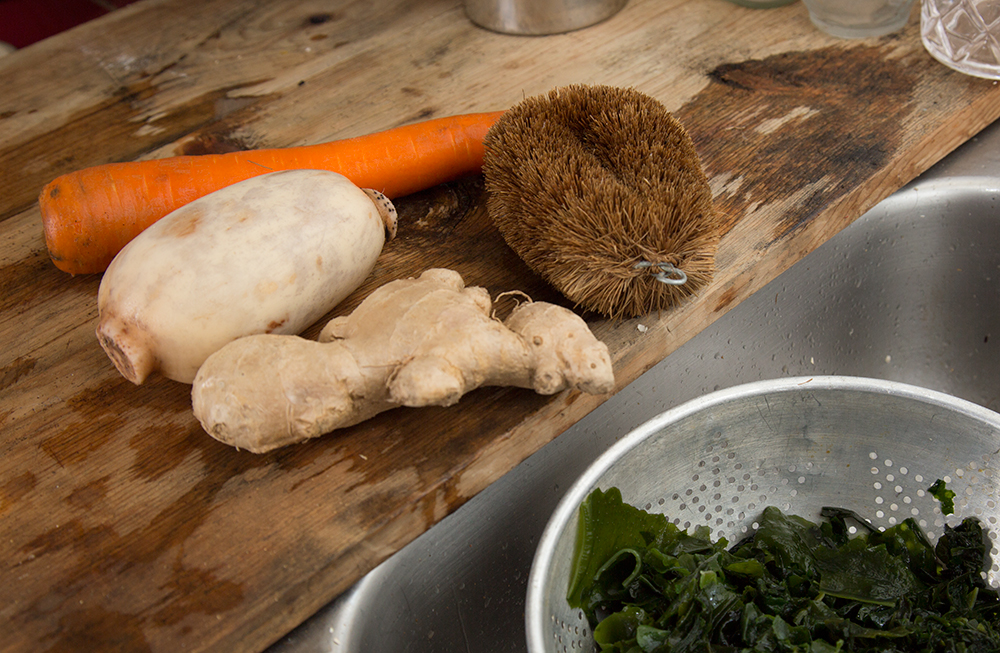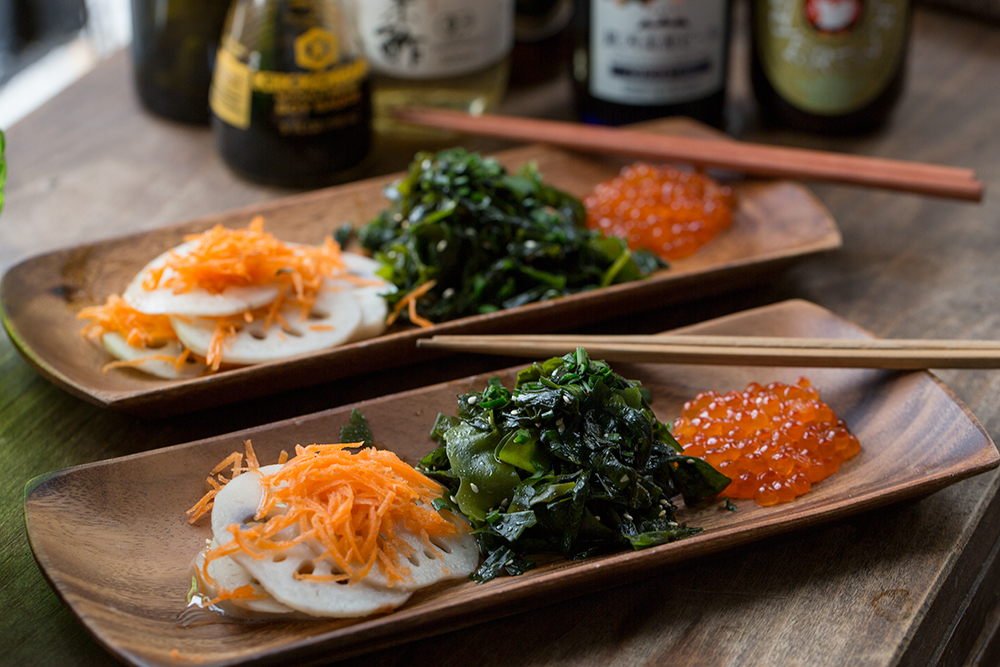
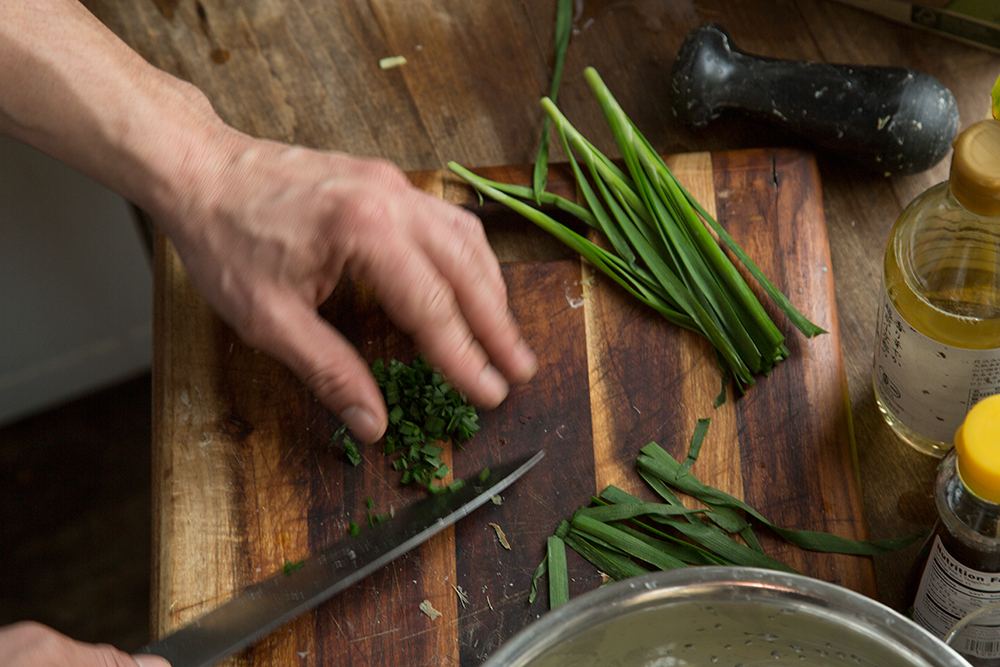
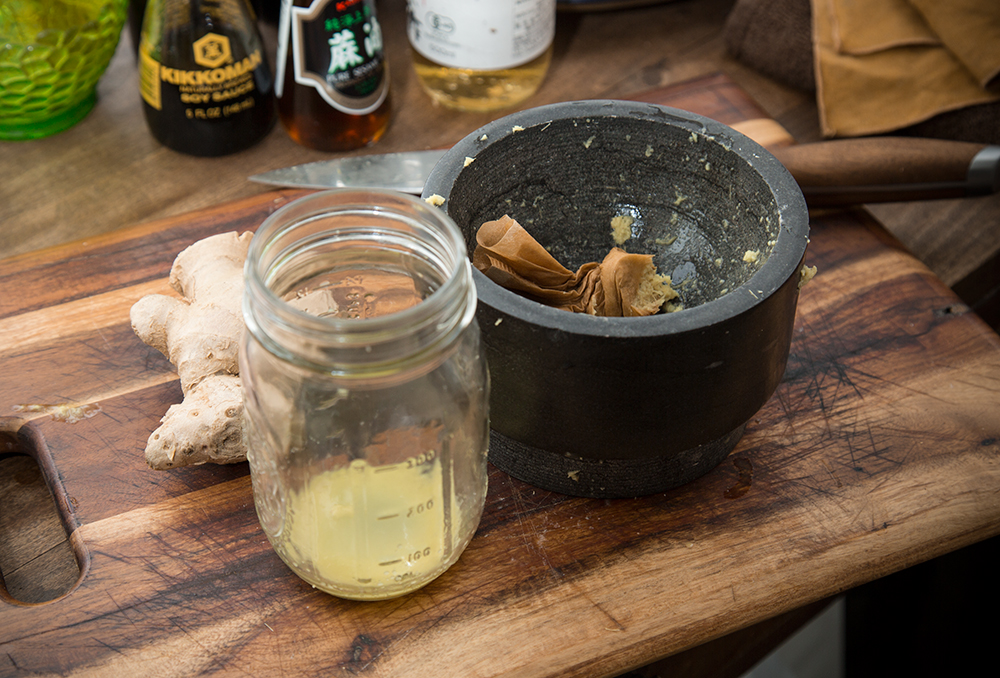
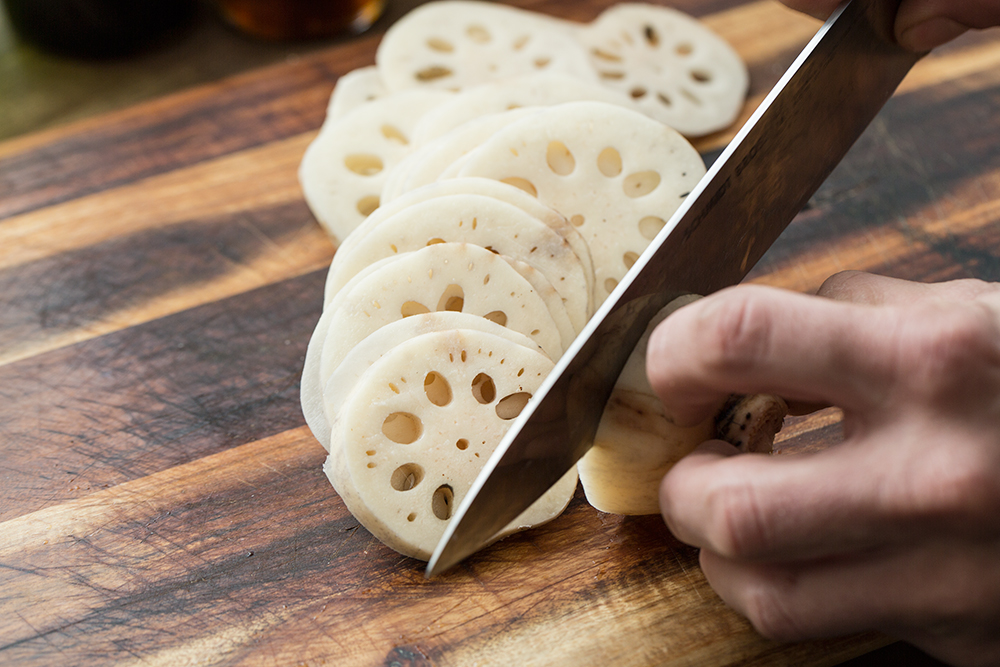
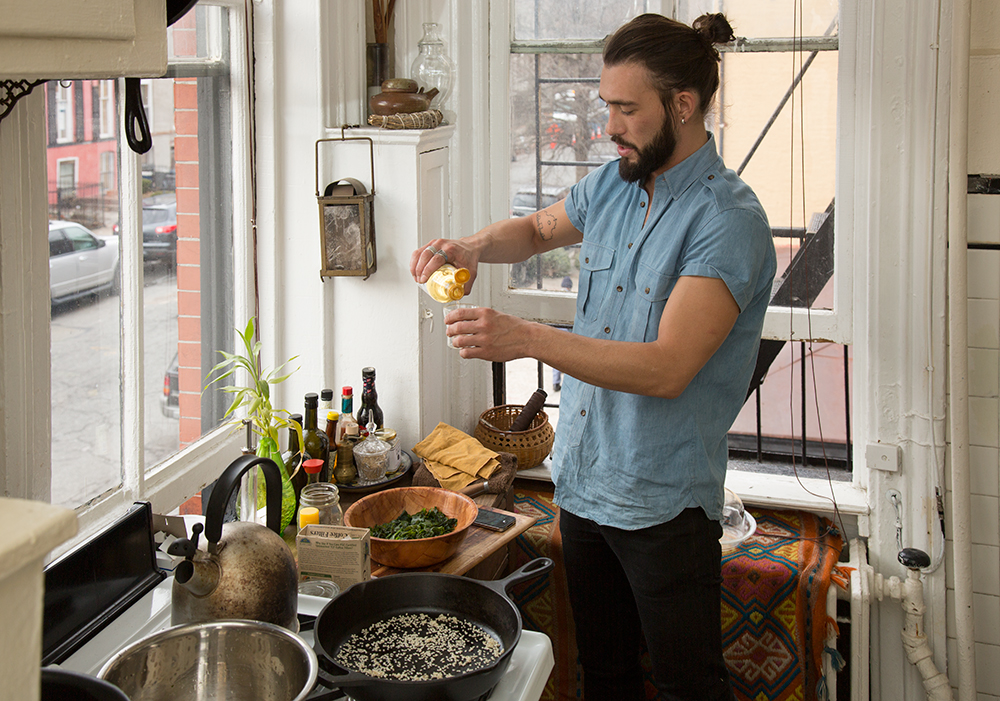
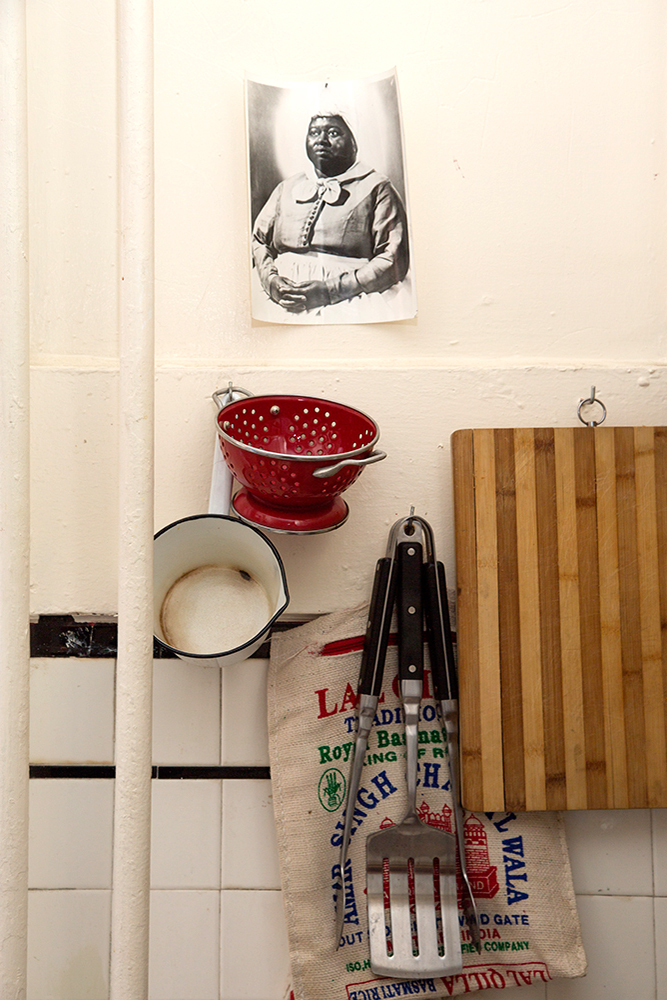

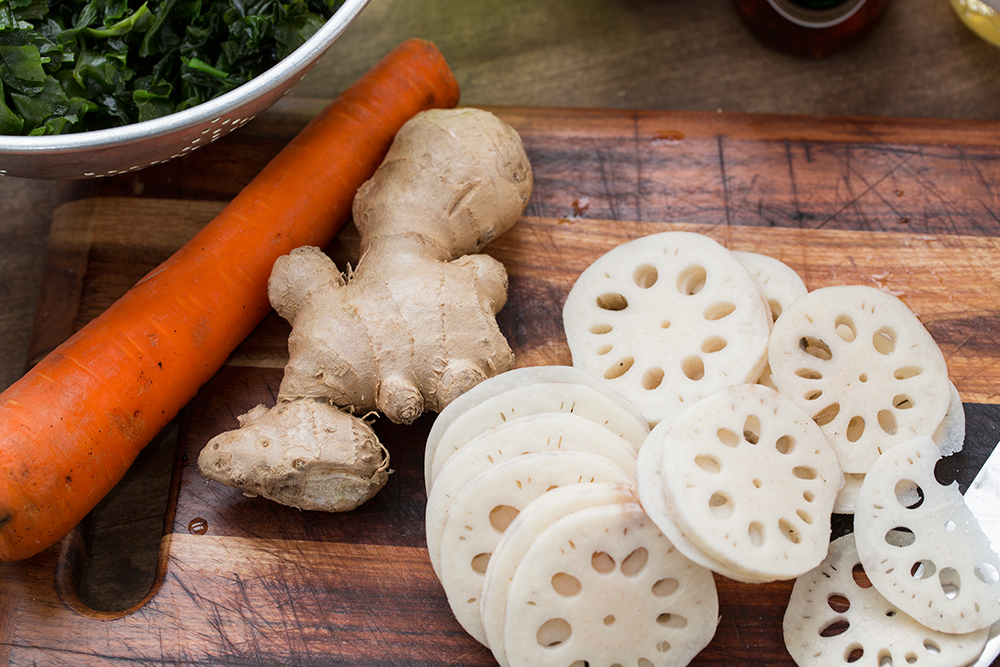
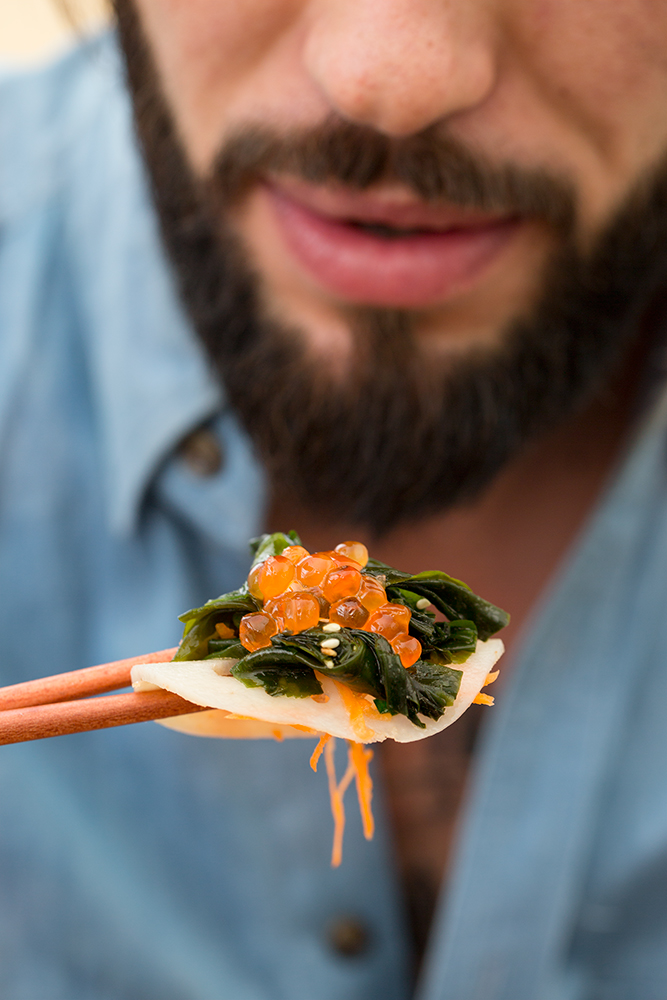

INGREDIENTS
- CARROTS,
- chinese garlic,
- ginger,
- lotus root,
- rice wine vinegar,
- salmon roe,
- seaweed,
- sesame oil,
- sesame seed,
- wakame
NOTES
Contains specialty ingredients, head to your Japanese market to find Lotus root, seaweed and salmon roe.
RECIPE
DIFFICULTY
MODERATE
SERVES
5
PREP TIME
15 MINS
Salad
-
1Lotus Root
-
25gramsDried Wakame seaweed
-
1small containerSalmon Roe
-
2pieces“Nira" - a Japanese garlic chive. (Regular chives can be substituted just fine.)
-
1small carrot, peeled
-
12"piece ginger root
-
1tspuntoasted white sesame seeds
Dressing
-
1tbstoasted sesame oil
-
1 - 2tspunsweetened rice wine vinegar
-
1tspTamari or soy sauce
INGREDIENTS
- CARROTS,
- chinese garlic,
- ginger,
- lotus root,
- rice wine vinegar,
- salmon roe,
- seaweed,
- sesame oil,
- sesame seed,
- wakame
Daniel Kent is the honorary mayor of our neighborhood and the friendly face behind the bar at Locanda Vini e Olii. He also happens to live above the restaurant, so if you are looking for him, you can usually find him at the corner of Gates and Cambridge Place in Brooklyn, greeting small children, puppies, the mailman or the local cop on any given afternoon (after his regular early morning surf at Rockaway Beach). Once the sun sets, I strongly suggest you visit Locanda and sample some of Daniel’s homemade liquors, paired down with their impeccable Tuscan cuisine. He brews his own herbal vermouths, a number of bitters, an elderflower liqueur, a walnut liqueur, a seasonal Chinato and a citron liqueur, and he knows a thing or two about wine as well. It was no surprise that he went to the extra length to pair this salad with some craft Japanese beer when I came over.
He also had a few tricks up his sleeve that I have to acknowledge. The use of a Japanese vegetable brush to wash and lightly slough-off vegetable skin was so elegant, I just bought one of my own. And, he made his own concentrated ginger juice by squeezing ginger through a brown paper coffee filter. That’s my kind of life-hack.
Daniel may have found his ideal live/work geo-coordinates, but he has called many-a-place home: born in Japan, raised in Wisconsin, a stint in Indonesia, and most importantly, Florence where he received his Master’s degree in Italian Literature. For those of us who don’t like to leave the neighborhood, we take great pleasure in his cosmopolitan ways, not to mention his generous use of the Italian language.
Daniel Kent in His Own Words
Julia: How does salad figure into your daily life?
Daniel: I eat my greens every day. Keeps me regular!
Julia: Why did you choose to do a Japanese salad and not something Italian? Do you often cook Japanese food when not at the restaurant?
Daniel: I eat and cook Italian food at least once daily and therefore love a chance to try something new. I would say my true school of cooking comes from a Tuscan tradition – where I lived for many years and work very closely with here in New York City. This cuisine prides itself on simplicity and a vivid expression of very few ingredients. I think a similar philosophy is found in excellent Japanese cooking and it is something I would really love to explore.
Julia: How do you say “seaweed” in Italian?
Daniel: In Italian “seaweed” is “alga” or often plural “algae”
